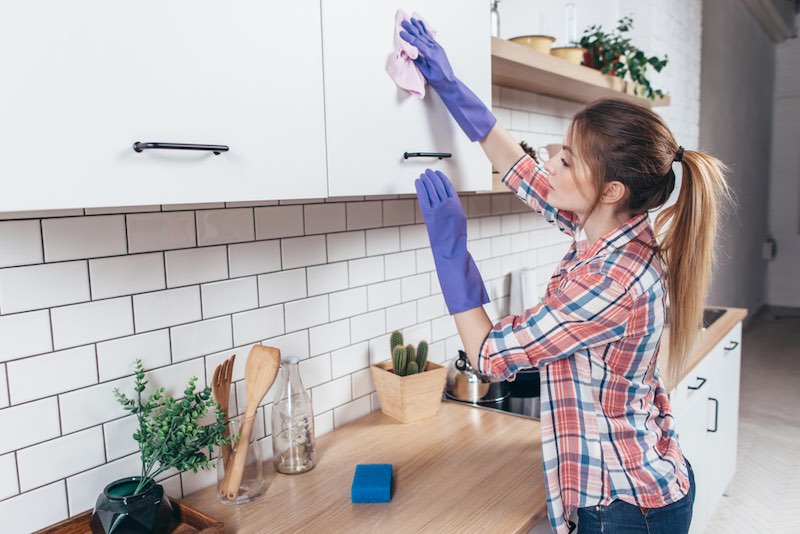How to Clean Kitchen Cabinets and Keep Them Shining
by Gary Wade • April 11, 2024
Maintaining the shine and extending the longevity of kitchen cabinets is crucial, not only for the aesthetic appeal of the heart of your home but also for upholding cleanliness and functionality. Whether it's tackling the challenge of how to clean greasy kitchen cabinets or addressing the nuances of how to clean kitchen wooden cabinets, the necessity for regular cleaning encompasses various types of cleaning from routine touch-ups to tackling stubborn grease and grime. This guide is tailored to navigating you through the essential steps of how to clean kitchen cabinets, ensuring they remain a vibrant and pristine feature of your kitchen.
Embarking on the journey of keeping your kitchen cabinets in top condition involves more than a simple dusting. From learning how to clean kitchen grease off cabinets to understanding the specific care for different materials including wood, laminate, painted wood, and glass-front cabinets, this article delves into a two-part cleaning schedule recommended for optimal results - encompassing weekly spot treatment and seasonal deep cleaning. Our definitive guide equips you with not only the how-to but also sheds light on the right cleaning solutions and tools for the job, catering to specialized needs such as how to clean kitchen cupboards and kitchen cabinet doors, ensuring you're prepared to uphold the elegance and longevity of your kitchen's crowning glory.
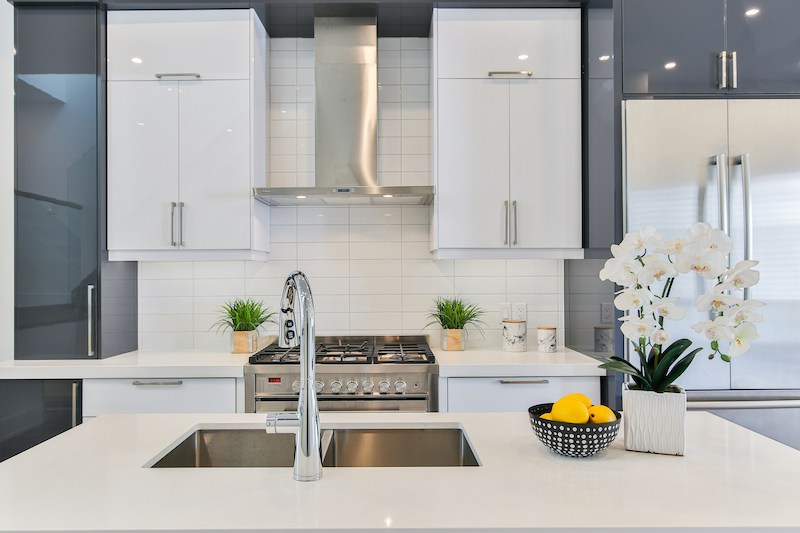
Preparing Your Cleaning Solutions
Embarking on the task of how to clean kitchen cabinets, the preparation of effective, yet gentle cleaning solutions is paramount. These solutions should tackle everything from routine dusting to the stubborn grease that can accumulate over time. Here's a comprehensive list of DIY cleaning solutions tailored for various needs, ensuring your cabinets are not only clean but also cared for properly:
For General Cleaning:
- Mix 1 cup of hot water with 1/4 cup of dish soap (Castile soap or Attitude brand recommended) in a spray bottle. This mixture is perfect for regular maintenance cleaning.
- In a separate container, prepare a rinse solution with just water to remove any soap residue after cleaning.
For Grease and Grime:
- Create a 50/50 solution of distilled white vinegar and water in a spray bottle. Vinegar, being a natural degreaser, works wonders on greasy surfaces. Apply the solution, let it sit for a couple of minutes, then wipe clean with a soft cloth.
- For thick grease build-up, a paste made from baking soda and water can be applied to the affected areas. Allow it to sit for a few minutes before scrubbing gently with a cloth or soft-bristle brush.
Special Solutions for Stubborn Stains:
- Combine baking soda, warm water, and lemon juice to tackle stubborn stains. Spray the mixture onto the cabinets, wait for a few minutes, and then scrub softly with a sponge.
- For tough stains on wood cabinets, make a paste using vinegar and salt. Apply gently with an old toothbrush, then wipe away.
It's important to note that while homemade cleaners are effective and safer for the environment and your health, they may not always match the potency of commercial products. However, for those who prefer natural alternatives, these solutions offer a safe and effective way to maintain the cleanliness and integrity of your kitchen cabinets. Always remember to test a small, inconspicuous area first to ensure the solution does not damage the finish of your cabinets.
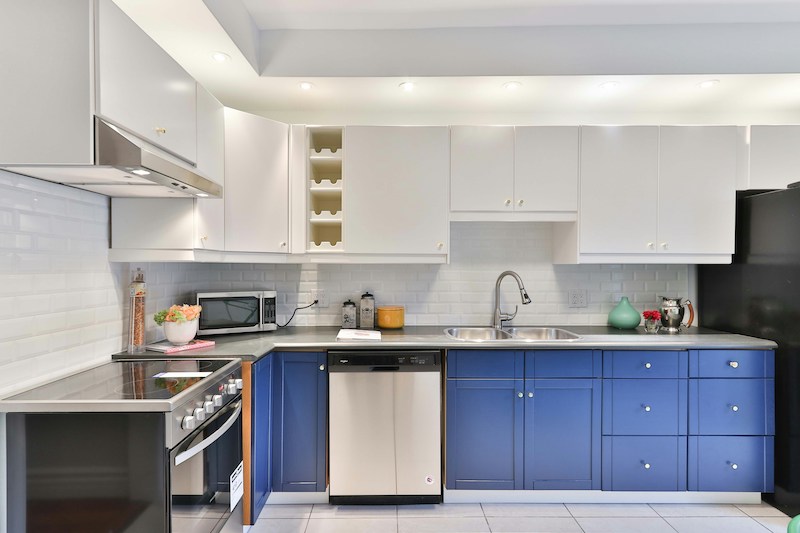
Gathering Necessary Cleaning Tools
Gathering the right tools before embarking on the task of cleaning your kitchen cabinets can make the process more efficient and effective. Here’s a comprehensive checklist of the necessary cleaning tools to ensure your cabinets are not only clean but also cared for properly:
Basic Cleaning Tools:
- Microfiber cloths: Essential for wiping away dirt and grease. Use a good quality microfiber cloth for cleaning and a microfiber polishing cloth to ensure more polish gets on the wood rather than being absorbed by the cloth.
- Non-abrasive sponges: Perfect for gentle scrubbing without scratching the cabinet surfaces.
- Bucket and clean spray bottle: For mixing and applying cleaning solutions.
- Lint-free cloth: Ideal for cleaning and shining, helping to avoid spreading dust. A regular kitchen bar cloth can also be used if a lint-free cloth is not available.
- Toothbrush or other soft brush: Handy for reaching into crevices and around hardware.
Specialized Tools for Specific Tasks:
- For glass cabinets: Prepare a mixture of water and vinegar (or use a commercial glass cleaning liquid) in a spray bottle. Use two lint-free cloths—one for cleaning and another for drying.
- For chrome hinges inside the door: A steamer can be an effective tool for removing grime and buildup.
Additional Tips:
- Avoid abrasive scrubbing tools and cleaning products to prevent damage to the cabinet surfaces.
- Vacuuming: Emptying out the cabinets and vacuuming the debris can be a crucial first step in the cleaning process.
- Drying and Polishing: After cleaning, always wipe with a damp towel and buff with a dry one to remove any residue and achieve a polished finish.
Remember, the right tools not only aid in cleaning but also help in maintaining the integrity and appearance of your kitchen cabinets. Whether tackling greasy spots or ensuring a streak-free shine on glass-front cabinets, equipping yourself with these tools will set you up for success.
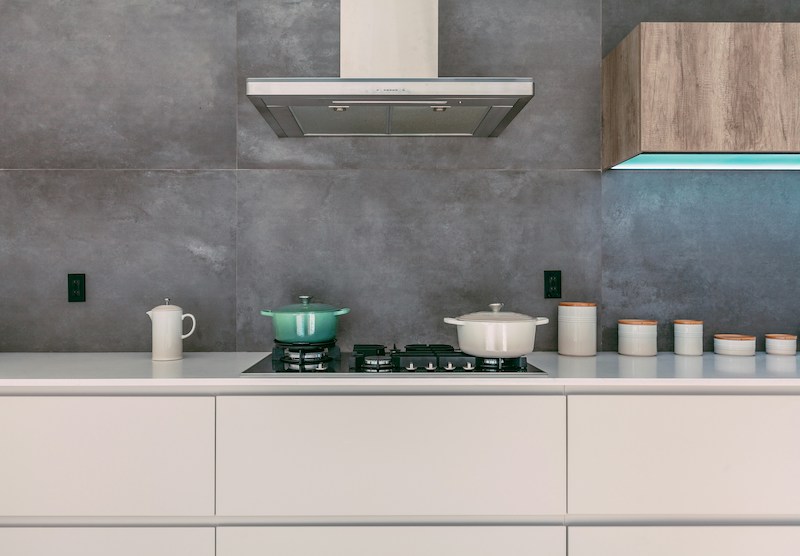
Routine Cleaning of Kitchen Cabinets
Regular cleaning and maintenance of kitchen cabinets are pivotal in maintaining a clean, hygienic kitchen environment and preventing the excessive buildup of grease and grime. Here's how to establish an effective routine for keeping your cabinets in pristine condition:
Weekly Cleaning Routine:
- Dusting: Use a soft, microfiber cloth to dust the exterior and interior of the cabinets, including the top surfaces where dust and grease tend to accumulate.
- Wipe Down: Prepare a mild cleaning solution by mixing warm water and a few drops of dish soap. Dunk a microfiber cloth or sponge in the solution, wring it out well, and gently wipe down the cabinet doors, inside and out. Pay special attention to areas around handles and knobs where fingerprints and grease can accumulate.
- Hardware and Corners: For cabinet hardware and tight corners, use a clean toothbrush dipped in the cleaning solution to gently scrub away grime. This ensures all parts of the cabinet are thoroughly cleaned.
- Rinse and Dry: After cleaning, rinse the cabinets with a clean, damp cloth to remove any soap residue. Follow up with a dry microfiber cloth to buff the surfaces dry, preventing any water damage.
Seasonal Deep Cleaning Steps:
- Empty Cabinets: Begin by emptying the cabinets of all contents. This allows for a thorough cleaning of the shelves and the interior spaces.
- Cleaning Solution: Use the same mild solution of warm water and dish soap for deep cleaning. For wood cabinets, an oil-soap wood cleaner can be used for a gentle, effective clean.
- Inside Out: Start cleaning from the inside of the cabinets, wiping down shelves, the back of the cabinet doors, and the cabinet box. Proceed to clean the exterior surfaces, working from top to bottom to avoid drips on already cleaned areas.
- Hardware and Details: Clean any hardware, grooves, or trim on the cabinets where dust and grease can build up. A toothbrush can be helpful for these detailed areas.
- Drying: Ensure all surfaces are thoroughly dried with a clean, soft cloth to prevent moisture damage to the cabinets.
Maintaining Cabinet Integrity:
- Avoid Heat and Moisture: Keep cabinets away from high heat and moisture sources to prevent damage to the finish. Toaster ovens located directly under a cabinet and broiling with the oven door open (even a crack) are also common offenders in unexpected cabinet damage.
- Prompt Spill Cleanup: Clean up spills and splatters immediately to prevent staining and damage to the cabinet surfaces. Standing water in any joint can soak in and cause swelling and damage to the finish.
- Protective Products: For finished wood cabinets, consider using a cabinet cream after cleaning to add a layer of protection and enhance shine.
By incorporating these steps into your routine, you can ensure your kitchen cabinets remain clean, functional, and aesthetically pleasing. Regular maintenance not only prolongs the life of your cabinets but also contributes to a healthier kitchen environment.
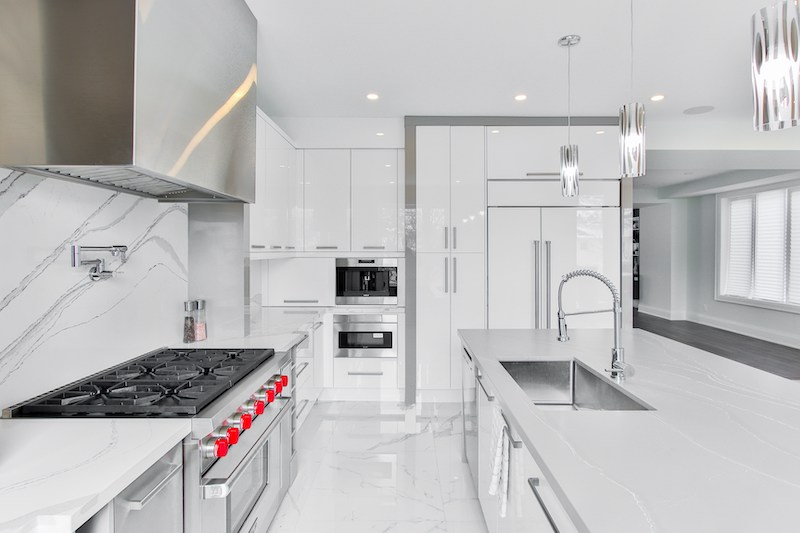
Addressing Grease and Grime
Addressing grease and grime on kitchen cabinets can seem daunting, but with the right approach, it's a task that can be tackled efficiently. Here are some strategies to keep your cabinets looking their best:
Preventive Measures:
- Use ventilation, like a cooker hood or extractor fan, to remove airborne grease particles.
- Cook with lids on pans to contain splatters and reduce the release of grease.
- Install grease guards or splatter screens around the cooking area to minimize the spread of grease.
- Remember, kitchen cupboards near the hob or cooking area are prone to accumulate the most grease.
Cleaning Techniques:
- For immediate grease removal, a mix of white vinegar and hot water proves effective; simply wipe with the solution and rinse with clear water.
- A paste of baking soda and water applied to greasy spots can lift grime; let sit for a few minutes, then wipe away and polish with a clean cloth.
- Dish soap, known for cutting through grease, can be used on a dampened soft cloth or sponge for wiping the exterior surfaces of the cabinet doors and drawers.
- For painted cabinets, a cloth dampened with diluted ammonia helps clean grease off kitchen cabinets; gently wipe until the stain is less noticeable.
Maintenance and Care:
- After cleaning, always wipe away any residue and buff the wood with a dry, soft cloth to restore its natural shine.
- Consider protection products containing beeswax to prevent the wood from drying out and to repel kitchen grease.
- Regularly clean the hardware to avoid grease build-up, using vinegar for metal door hardware to remove grime and fingerprints.
By incorporating these preventive measures and cleaning techniques into your routine, you can maintain the appearance and integrity of your kitchen cabinets. Remember, tackling grease and grime is not just about the immediate cleanup but also about applying strategies to prevent future build-up.
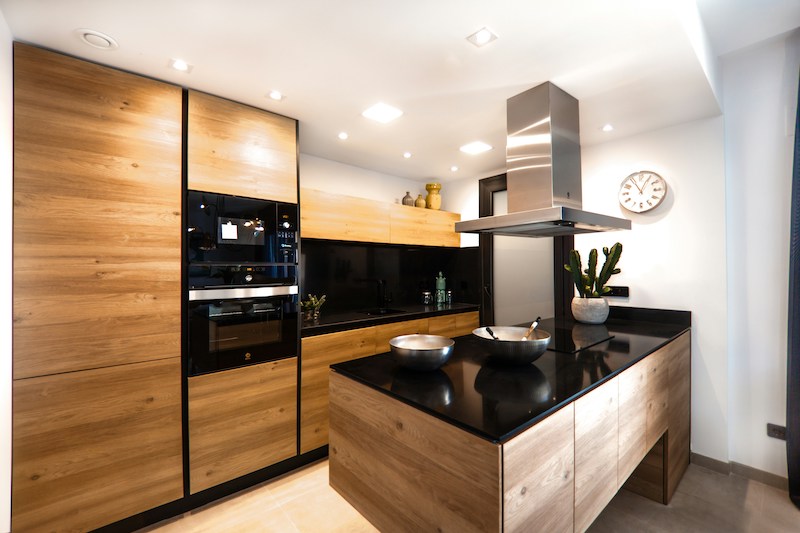
Tackling Tough Stains on Wood Cabinets
Tackling tough stains on wood cabinets requires a delicate balance to ensure the wood's integrity is not compromised. Here are some effective methods and precautions for addressing stubborn stains:
Initial Cleaning Steps:
- Soap and Water: Begin with a gentle cleaning solution of soap and water to remove any surface dirt or grease that may make the stain appear worse than it is.
- Baking Soda Paste: For more persistent stains, create a paste using baking soda and water. Apply this to the stain, let it sit for a few minutes, then gently wipe away. Baking soda is known for its gentle yet effective cleaning properties.
- Vinegar Solution: If the stain persists, a solution of vinegar and water can be used as a natural cleaning agent. Remember to test this on an inconspicuous area first to ensure it does not affect the wood's finish.
Advanced Stain Removal Techniques:
- Soy Gel Paint Urethane Stripper (Blue Bear brand recommended): For the most stubborn stains, apply this product generously, ensuring it gets into the grain and covers all corners and edges. The product remains active for up to 24 hours, and depending on the stain's stubbornness, it may take between 15 minutes to two hours to soften the stain.
- Bleach for Deep-Set Stains: If the stain has penetrated into the wood, using bleach can help lighten the stain. Note that this may soften the wood fibers and could necessitate re-staining. Always follow up with sanding to smooth the surface.
Precautions and Care:
- Avoid Harsh Chemicals: Steer clear of bleach (unless absolutely necessary), solvents, strong detergents, ammonia, nail polish remover, and paint thinners as these can damage the wood's finish.
- Nail Polish Remover for Ink Stains: In cases of ink or permanent marker stains, dabbing a small amount of nail polish remover on the stain can be effective. However, this should be used sparingly and never rubbed to avoid damaging the clear coat.
- General Care: Use general-purpose oil-soap wood cleaners for routine cleaning, being mindful not to saturate the wood or expose it to drastic temperature changes which could cause warping or other damage.
By following these methods, you can effectively tackle tough stains on your wood cabinets while preserving their beauty and integrity. Always start with the least invasive cleaning method and progressively move to stronger solutions as needed, ensuring to test any cleaner on a hidden area first to avoid unexpected damage.
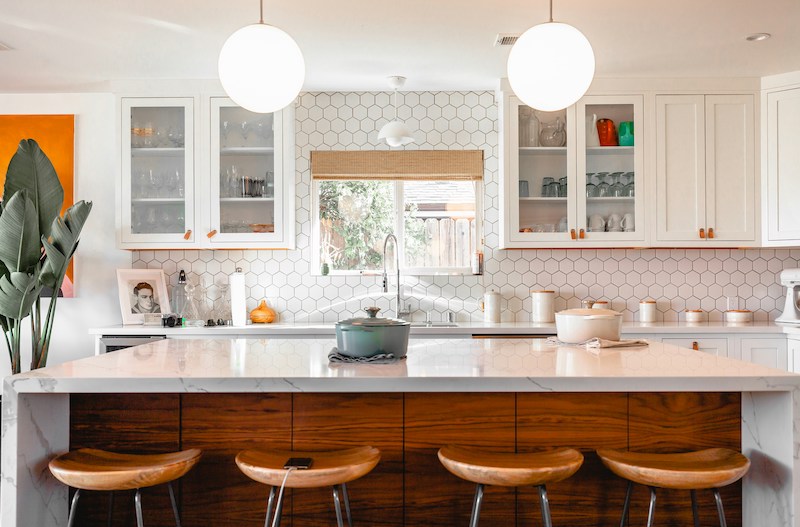
Cleaning Painted and Laminate Cabinets
When it comes to cleaning painted and laminate cabinets, the approach requires a gentle touch to ensure the material's integrity while effectively removing dirt, grease, and stains. Here's a structured guide to maintaining these surfaces:
Painted Cabinets:
- Regular Cleaning:
- Mix warm water with a few drops of a mild dish soap in a bucket. Dip a microfiber cloth into the solution, wring it out, and gently wipe the painted surfaces.
- For stubborn spots, a diluted cleaner or wood cleaner can be applied sparingly and scrubbed gently with a soft sponge.
- Stain Removal:
- Create a paste using baking soda and water for tougher stains. Apply the paste directly onto the stain, let it sit for a few minutes, and then wipe clean with a damp cloth.
- Drying:
- Always use a clean, dry cloth to thoroughly dry the cabinets after cleaning to prevent any watermarks or damage to the paint.
Laminate Cabinets:
- Routine Cleaning:
- For daily or weekly cleaning, use a solution of warm water and mild dish soap. Apply with a damp sponge, gently wiping down the laminate surfaces.
- Alternatively, all-purpose cleaning wipes or diluted vinegar can be used for a quick wipe-down, ensuring to rinse with a clean, damp cloth afterward.
- Tough Stain Removal:
- For persistent stains, a baking soda paste or an all-purpose cleaner is effective. Apply the baking soda paste onto the stain, allow it to set, then wipe clean.
- For stains that resist the baking soda treatment, gently applying an all-purpose cleaner with a sponge and rinsing thoroughly can offer a solution.
- Drying and Maintenance:
- Regardless of the cleaning method, always finish by drying the cabinets with a clean, soft cloth. This step is crucial for laminate cabinets as it prevents water from seeping into seams, which could cause peeling or warping.
By following these tailored cleaning methods for painted and laminate cabinets, you can ensure that your kitchen remains a clean, welcoming space. Regular maintenance not only preserves the appearance of your cabinets but also extends their lifespan, making your kitchen a source of pride and joy.

Special Considerations for Glass-Front Cabinets
Glass-front kitchen cabinets add a touch of elegance to any kitchen, showcasing your beautiful dinnerware and glassware. However, they require special attention to keep them clean and shining. Here’s how to maintain the aesthetic appeal, durability, and safety of your glass-front cabinets:
Routine Cleaning Steps:
- Empty and Dust: Begin by emptying the cabinets. Use a soft cloth or microfiber to dust off the doors and shelves gently.
- Apply Cleaner: Spray a high-quality glass cleaner or a homemade solution of vinegar and water on the interior and exterior of the glass. Avoid spraying directly on the glass to prevent seepage into the cabinets.
- Wipe Down: Use two lint-free cloths for cleaning. Dampen one cloth in warm water to wipe off the cleaner, then use a second dry cloth to polish the glass until it dries completely. This method ensures a streak-free finish.
Preventive Measures and Maintenance:
- Gentle Use: Always close glass cabinet doors gently to avoid damage to the glass, hinges, and frames. Avoid storing heavy items on glass shelves to prevent breakage.
- Immediate Attention to Stains: Address potential stains promptly. For fingerprints, a simple solution of vinegar will suffice. For greasier stains, a mix of baking soda in vinegar or a commercial glass cleaner can be effective.
- Regular Cleaning Schedule: Clean cabinet doors and drawers every two weeks and conduct a thorough cleaning of the entire cabinets, inside and out, every six months. This routine ensures the cabinets remain in pristine condition.
Special Considerations:
- Soft Materials: Use soft materials like cotton washcloths or microfiber cloths for cleaning to avoid scratching the glass.
- Avoid Harsh Chemicals: Steer clear of using harsh detergents, scouring pads, and hot water that can damage the glass and the cabinet’s finish.
- Lighting and Display: If your glass-front cabinets feature interior lighting, ensure it's installed by a licensed electrician to enhance the display without risking damage. Proper arrangement of items within the cabinets is key to a clutter-free, presentable display.
By adhering to these cleaning and maintenance tips, your glass-front kitchen cabinets will continue to serve as a stunning feature in your kitchen, combining functionality with aesthetic appeal.
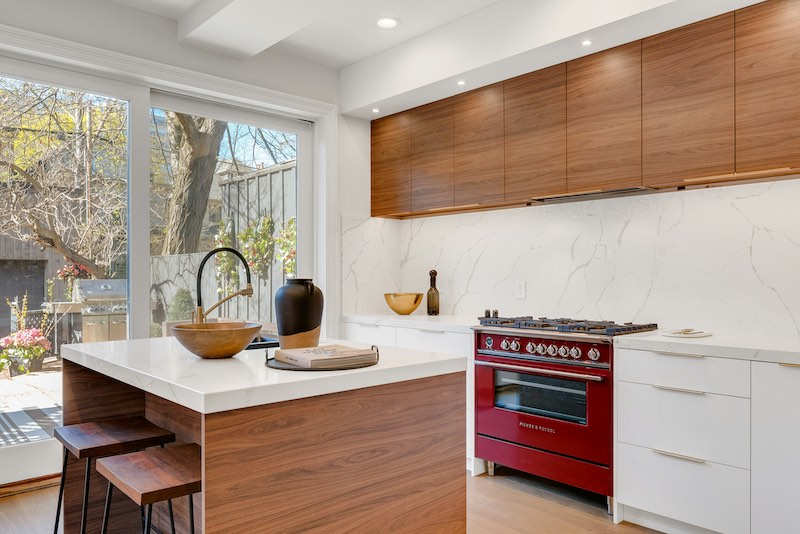
Drying and Polishing Cabinets for a Finished Look
After ensuring your kitchen cabinets are thoroughly cleaned, the final steps involve drying and polishing to achieve that coveted finished look. This process not only enhances the aesthetic appeal but also forms a protective layer, maintaining the cabinets' condition over time. Here's a detailed approach to drying and polishing your kitchen cabinets effectively:
Drying Process:
- Step 1: Start at the top of the cabinet and work your way down, using a clean, moist cloth to remove any residue from the cleaning solution. This step ensures no cleaning agent remains on the surface that could potentially damage the finish over time.
- Step 2: Wipe down the hardware as well to remove any lingering cleaning solution or water spots.
- Step 3: Go back over the cabinets with a dry microfiber cloth, removing any remaining moisture. This step is crucial as lingering moisture can lead to damage or a breeding ground for mold and mildew.
Polishing Cabinets:
- Choosing the Right Polish: Opt for a polish that is safe for food preparation areas. Beeswax or a homemade mixture of olive oil and white vinegar in a 1:1 ratio are excellent choices. These natural options avoid the introduction of toxic or harsh chemicals, preserving the natural wood grain and shine.
- Application:
- Apply the chosen polish to a microfiber cloth, ensuring even distribution.
- Rub onto the cabinets in a circular motion, starting from the top and making your way down. This ensures an even coat and helps to work the polish into the wood, revitalizing its natural luster.
- For wooden cabinets, consider polishing with beeswax or lemon oil-based polishes. These substances not only clean but also create a protective layer against dirt buildup.
- Maintenance:
- Regularly polish your cabinets every 2-3 months to maintain their appearance and increase longevity.
- Apply a furniture wax every six months to create a protective barrier that prevents oil buildup and makes future cleaning easier.
By adhering to these drying and polishing steps, you can ensure your kitchen cabinets not only look their best but are also protected and preserved for future use. Remember, the key to maintaining the beauty of your kitchen cabinets lies in regular care and using the right products that enhance their natural beauty without causing harm.
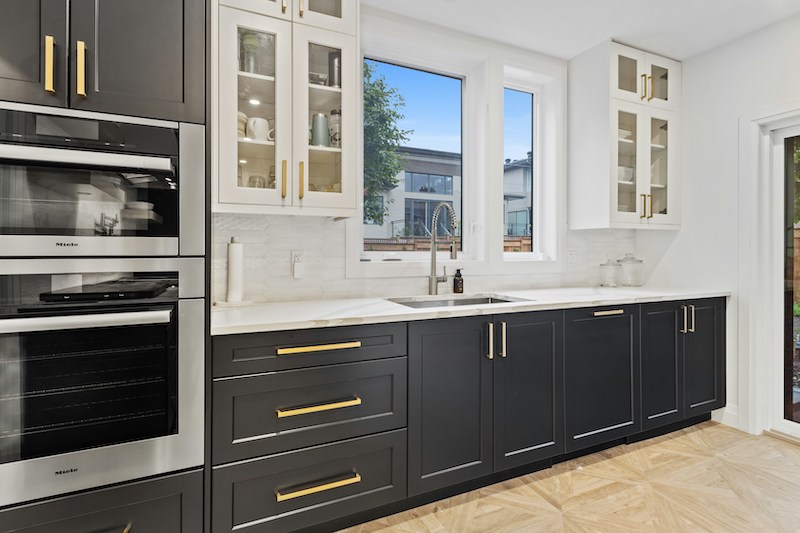
How to Clean Kitchen Cabinets: Final Thoughts
Throughout this comprehensive guide, we have explored the nuances of keeping kitchen cabinets in pristine condition, covering everything from routine cleaning practices to tackling tough stains on wood cabinets. The journey through various methods and tools, alongside the emphasis on gentleness and effectiveness, underscores the importance of maintaining the aesthetic appeal while ensuring the longevity of your kitchen's crowning glory. The detailed exploration into the specifics of cleaning painted, laminate, and glass-front cabinets provides a tailored approach to preserving their integrity and shine.
As we conclude, remember that the effort put into maintaining your cabinets not only enhances the beauty of your kitchen but also contributes to a clean, hygienic cooking environment. Regular care, coupled with the right cleaning solutions and tools, ensures your cabinets remain a source of pride and functionality. For those looking to enhance their kitchen with quality and style, consider exploring the options at Best Brand Cabinets for all your cabinet needs. Let the insights from this guide inspire you to keep your kitchen cabinets shining and your culinary space welcoming for years to come.

FAQs
How to Clean and Shine Kitchen Cabinets
Q: What method can I use to clean my kitchen cabinets and give them a shiny finish?
A: Create a mixture of equal parts vegetable oil and vinegar, and lightly apply it to the cabinet surfaces using a clean, soft cloth. Gently rub the mixture in and buff until the cabinets shine.
The Best Cleaning Solution for Cabinets
Q: What is the most effective cleaning solution for kitchen cabinets?
A: A 50/50 mixture of vinegar and warm water is highly effective. Put this solution in a spray bottle, mist it onto the cabinets, let it sit for a minute or two, and then wipe it off with a soft cloth. For extremely dirty cabinets, add a few drops of liquid dish soap to the vinegar and water solution.
Achieving Glossy Kitchen Cabinets
Q: How can I make my kitchen cabinets appear glossy?
A: Lacquer is the preferred choice for achieving a glossy finish on wood cabinets. Spray the first coat of high gloss lacquer and allow it to dry, which usually takes about 2 hours. The wood fibers will rise after the first coat. Repeat this process until you achieve the desired number of coats and glossiness.
Maintaining High Gloss Kitchen Units
Q: What is the best way to keep high gloss kitchen units clean?
A: To clean gloss kitchen doors effectively, use a soft microfiber cloth to avoid scratching or damaging the surface. Steer clear of harsh chemical cleaning products and be gentle during the cleaning process.


